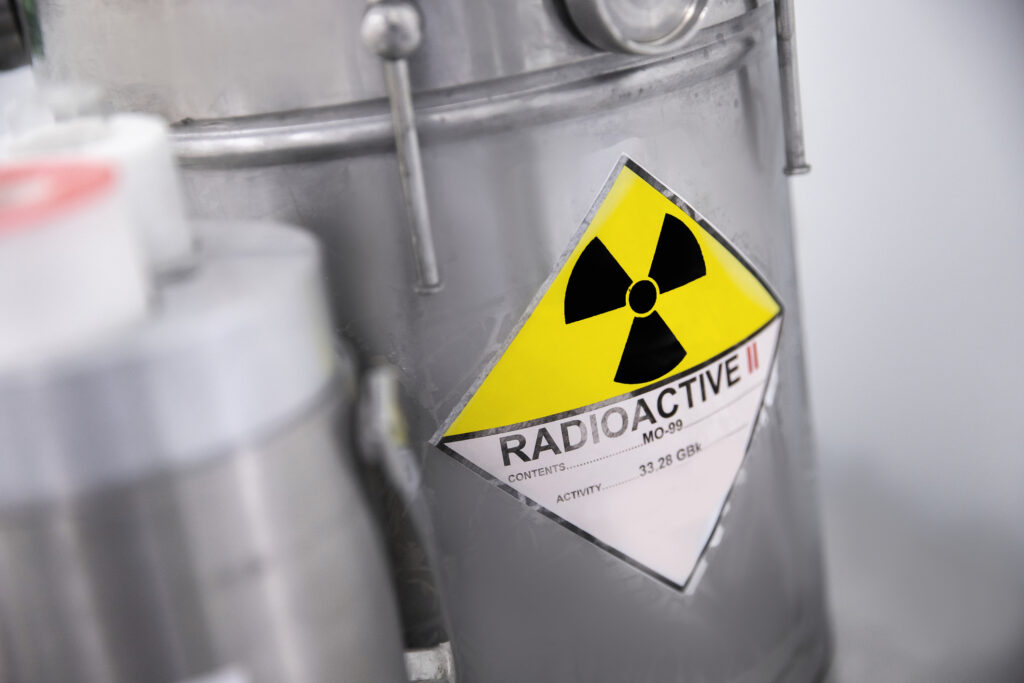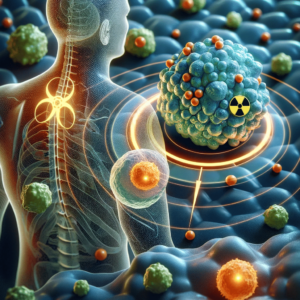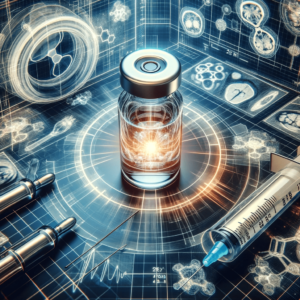Summary: Radionuclide production plays a central role in modern medicine, industry, and scientific research. This article provides a thorough overview of how radionuclides are produced, with particular focus on nuclear reactors and cyclotrons, as well as emerging methods involving accelerators and generators. It explores their application in medical diagnostics and therapy, industrial radiography, and scientific studies. The article also examines the regulatory landscape and outlines the key challenges and innovations that will drive the future of this important field.
Keywords: radionuclide production, cyclotron, nuclear reactor, medical imaging, radiopharmaceuticals, isotope generators
Principles of Radionuclide Production
Radionuclides are radioactive isotopes used across various sectors, most notably in nuclear medicine and industry. Their controlled production enables numerous beneficial applications, from imaging diseases to assessing the integrity of infrastructure. While their radioactivity may evoke concern, when handled within regulated environments, radionuclides are both safe and immensely useful. The increasing demand for precision diagnostics and targeted therapies has only heightened interest in efficient and scalable radionuclide production.
Radionuclides are artificially created through nuclear reactions that alter the number of protons or neutrons in atomic nuclei. The two most established production routes are neutron activation in nuclear reactors and particle bombardment in cyclotrons.
In nuclear reactors, stable target materials are bombarded with neutrons, usually resulting in neutron-rich radionuclides. In contrast, cyclotrons accelerate charged particles such as protons or deuterons to collide with target atoms, producing neutron-deficient radionuclides. The choice of method depends on the intended isotope, its half-life, and its mode of decay.
Nuclear reactions used in production include:
- (n,γ) reactions: where a nucleus captures a neutron and becomes radioactive.
- (p,n) or (d,n) reactions: where a proton or deuteron is added and a neutron is emitted.
- (α,n) reactions: where alpha particles are used.
The energy of incoming particles, the type of target material, and irradiation time are all crucial parameters that determine the yield and purity of the resulting radionuclide.
Production Methods
Nuclear Reactor-Based Production
Nuclear reactors have traditionally been the primary source of many radionuclides, including technetium-99m (derived from molybdenum-99), iodine-131, and phosphorus-32. They rely on a continuous neutron flux, making them ideal for large-scale production.
Molybdenum-99 is typically produced via the fission of uranium-235 or neutron activation of molybdenum-98. The fission route, while efficient, involves the use of highly enriched uranium (HEU), which raises concerns about nuclear proliferation. As such, efforts are underway to shift to low-enriched uranium (LEU) or alternative non-fission-based methods.
Reactor-based methods are suitable for producing high activity levels and allow the simultaneous generation of multiple isotopes. However, reactors are costly to operate and maintain, and their geographical distribution is limited, often leading to supply chain issues.
Cyclotron-Based Production
Cyclotrons have become increasingly important, especially for medical radionuclides. They can produce short-lived isotopes on demand and closer to the point of use, which is critical for isotopes such as fluorine-18 (used in PET scans) and carbon-11.
Cyclotrons operate by accelerating charged particles in a spiral path using a magnetic field. These particles then collide with a target material, causing nuclear reactions. The production of fluorine-18 via the 18O(p,n)18F reaction is one of the most common applications.
Cyclotrons are favoured for:
- Producing neutron-deficient radionuclides.
- Avoiding nuclear waste associated with fission.
- Enabling decentralised production.
However, cyclotron facilities require high capital investment and skilled operators, and not all isotopes are accessible via this method.
Radionuclide Generators
Generators offer a portable and efficient solution to producing short-lived isotopes from longer-lived parents. A classic example is the technetium-99m generator, which extracts the isotope from a molybdenum-99 source.
These systems are especially valuable in clinical settings where immediate access to a reactor or cyclotron is not available. They reduce the logistical complexity of isotope supply chains and allow on-site elution of radionuclides.
Other notable generators include:
- 68Ge/68Ga for PET imaging.
- 82Sr/82Rb for myocardial perfusion studies.
Challenges remain in generator design and efficiency, particularly in ensuring high radionuclidic and chemical purity.
Alternative Accelerator Technologies
Beyond cyclotrons, linear accelerators (linacs) and spallation sources are being explored. Linacs are used in some experimental settings to produce non-traditional isotopes with precise control over energy input.
Spallation, involving high-energy protons bombarding heavy nuclei, yields a broad spectrum of radionuclides. While promising, these methods are less common due to their high infrastructure requirements.
Emerging compact accelerator systems aim to provide reactor-grade isotope yields in smaller facilities, opening up new possibilities for decentralised production.
Applications of Radionuclides
Medical Diagnostics and Therapy
The most visible application of radionuclides is in nuclear medicine. Diagnostic imaging utilises tracers that emit gamma rays or positrons, which gamma cameras or PET scanners can detect.
Common diagnostic radionuclides include:
- Technetium-99m: bone scans, cardiac imaging, renal function tests.
- Fluorine-18: PET scans for cancer and neurological conditions.
- Gallium-68: neuroendocrine tumour imaging.
For therapy, radionuclides deliver cytotoxic radiation to diseased tissues while sparing healthy cells. Examples include:
- Iodine-131: treatment of thyroid cancer and hyperthyroidism.
- Lutetium-177: used in peptide receptor radionuclide therapy (PRRT).
- Actinium-225: under investigation for targeted alpha therapy.
Theranostics, which combines diagnosis and therapy using a single radionuclide or matched pair, is gaining traction, offering tailored treatment pathways.
Industrial and Environmental Use
Outside medicine, radionuclides support various industries. In radiography, isotopes such as iridium-192 are used to inspect welds and assess structural integrity. In agriculture, radioactive tracers are used to monitor nutrient uptake in plants and to evaluate pest control techniques, such as the sterile insect technique (SIT).
Environmental monitoring also benefits from tracer studies, helping track pollutants, groundwater flow, and sedimentation rates.
Challenges in Radionuclide Production
Several issues continue to impact radionuclide production:
- Supply Stability: Many key radionuclides rely on a few ageing reactors. Any disruption can affect global healthcare provision.
- Regulatory Compliance: The transport and use of radionuclides are subject to stringent national and international laws, which can complicate cross-border supply.
- Proliferation Concerns: The use of HEU in some reactor processes raises security and ethical issues.
- Waste Management: Handling radioactive waste safely adds cost and complexity.
- Production Cost: New facilities and alternative methods require substantial investment with uncertain returns.
Future Directions and Innovations
Efforts are underway to modernise radionuclide production and reduce dependence on traditional reactors. Key developments include:
- LEU-Based Production: Shifting away from HEU to improve safety and reduce proliferation risks.
- Automated Synthesis Modules: Streamlining radiopharmaceutical production in hospital settings.
- Novel Isotopes: Increasing research into alpha-emitters and theranostic pairs to treat previously untreatable cancers.
- Distributed Production Models: Using compact accelerators in hospitals or regional centres to decentralise supply.
- Public-Private Partnerships: Encouraging Collaboration to Ensure Long-Term Infrastructure Sustainability.
In the UK and beyond, government and academic initiatives are focusing on resilience, innovation, and sustainability in radionuclide production, aiming to meet growing clinical and industrial needs.
Conclusion
Radionuclide production is a cornerstone of modern scientific and medical practice. Although current methods are highly effective, they are not without limitations. Reactors and cyclotrons have underpinned progress so far, but emerging technologies and strategies promise to transform the landscape. With growing demand for targeted diagnostics and therapies, as well as the need for decentralised and sustainable supply, investment in this area is both timely and essential. The future of radionuclide production lies in combining innovation, safety, and accessibility to support both current needs and future breakthroughs.
Disclaimer
The information contained in this article is intended for general informational and educational purposes only. While every effort has been made to ensure accuracy, Open Medscience makes no guarantees regarding the completeness, reliability, or suitability of the content for any specific purpose. The article does not constitute professional advice—medical, scientific, regulatory, or otherwise—and should not be relied upon as such.
Any references to technologies, methods, or products are made in good faith and do not imply endorsement or recommendation by Open Medscience. Readers should consult qualified professionals or official regulatory sources before making decisions based on the material presented.
This publication may discuss topics related to radioactive substances and their applications in healthcare and industry. All such activities must be conducted in compliance with applicable laws, regulations, and safety standards. Open Medscience accepts no liability for any harm, loss, or damage arising from the use or misuse of the information provided.
You are here: home » diagnostic medical imaging blog »



